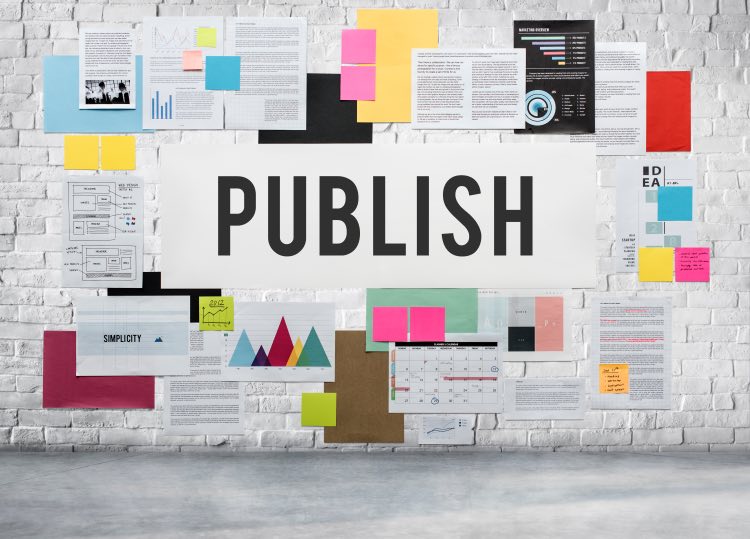Organizations that have content as a major portion of their marketing mix cannot underestimate the need for an effective and documented editorial strategy.
Research from the Content Marketing Institute cements this statement where 60% of B2B marketers working with a documented strategy efficiently met their business goals in contrast to the 32% of marketers who worked with an undocumented strategy, albeit not as effectively.
Why Do Organizations Need To Invest in an Editorial Strategy?
As an ambitious marketer working on perfecting your content marketing strategy, these may be some of the hurdles you’re facing at work:
- You seem to have a lot of ideas and concepts but somehow can’t find the time to explore them in-depth
- You think you have the big picture of your marketing project in sight but somehow the small tasks seem too daunting to accomplish effectively
- You find yourself reluctantly putting a few projects on hold because you need to prioritize the bigger projects
- The team you’re working with is spread too thin doing multiple tasks at once, pulling down the quality of work considerably
Facing such hurdles is quite common in the content marketing world. However, it’s only characteristic of the content marketing process to offer you so many possibilities only to end up wearing you out trying to meet them all and putting your business goals on the back burner in hindsight.
This is where having a reliable and strong editorial strategy makes sense. In this article, we’ll explore,
How you can cater to your target audience and offer them value to help them meet their goals while fulfilling your own.
The best practices and tools you can employ to streamline your content strategy efforts and maintain consistency and efficiency.
How you can develop a successful strategy that doesn’t just include the big picture but also highlights actionable measures to ensure you don’t leave behind any project.
What is an Editorial Strategy?
As a business, you want to make sure that your marketing efforts are driving the results that you need and reaching your target audience. Your editorial strategy is the foundation that drives these marketing efforts.
It’s a plan for what content you will create and publish, how you will promote it, and where you will publish it, commonly outlined in a thoughtful editorial calendar. This strategy is designed to achieve specific business objectives, through web-friendly content, such as increasing brand awareness or generating leads.
By crafting a relatable editorial strategy, you can ensure that your content is aligned with your business goals and resonates with your target audience.
An editorial strategy typically includes a mission statement, goals, target audience, messaging, content themes, and channels. It also outlines the process for curating and creating content, as well as how that content will be distributed, through which news site or channel.
Editorial strategies can be complex or simple, but they should always be tailored to the unique needs of your business. With a well-executed editorial strategy to create content, you can achieve your business goals and build a strong relationship with your target audience.
What Are the Benefits of an Editorial Strategy?
Any business that wants to be successful needs to have a clear editorial strategy. That’s because your editorial strategy provides the roadmap for all of your content, from a blog post and article to social media updates and email newsletters.
By clearly defining your target audience, objectives, and key messaging, you can ensure that all of your content is aligned with your overall business goals. Moreover, being on the same page as your consumers imply that you understand them better and can cater to their needs effectively.
Furthermore, a robust editorial strategy helps to keep your content ideas and calendar organized and ensures that you’re regularly creating fresh, relevant, and engaging content. You’ll have a backbone of workflows and checklists to fall back on if you find the work overwhelming at times.
Plus, an editorial approach allows content marketers to pinpoint which channels are best for delivering their content. Each channel has different content formats and trying to match every format can be exhausting. An editorial strategy helps marketers focus on the right marketing channels and cater to that format efficiently.
Perhaps most importantly, editorial planning helps you to avoid the common trap of publishing random, disconnected pieces of content. Without an editorial strategy, it’s easy to get lost in the sea of content that’s already out there.
But by taking the time to develop a clear editorial plan, you can ensure that your content stands out from the crowd and effectively engages your target audience.
8 Tips to Develop an Editorial Strategy That Drives Your Marketing Results
1. Identify and understand your target audience
A broad content strategy is akin to talking to a huge crowd that barely registers what you’re trying to tell them. It’s frustrating for them and yourself since neither of your end goals are met.
In contrast, speaking to a niche, well-defined audience through a targeted content strategy is akin to addressing them face-to-face regarding matters that actually mean something to them. You’ve managed to give them the exact solution they’ve been seeking from numerous sources.
Identifying your target audience is key when developing an editorial strategy – after all, you need to know who you’re writing for in order to write content that will resonate with them.
There are a few different ways to identify your target audience.
First, consider your product or service – who is it that would be most interested in using it?
Once you have a general idea of who your target audience is, you can start to get more specific by considering factors like age, location, gender, interests, and pain points.
The more specific you can get with your target audience, the better. Why?
Because when you’re able to speak directly to your ideal customer, they’re more likely to convert. So take the time to really narrow down who it is you’re trying to reach – it’ll be worth it in the end.
You can better understand how to customize your content creation efforts by conducting surveys and analyzing service/product usage through comprehensive CRMs, customer data, and more.
Want your marketing to succeed by documenting your editorial strategy?
Contact Growth Hackers
2. Create a Reflection of Your Brand Voice
Getting to know what you mean to your brand or how you want your audience to visualize your brand is the next step. It’s a discovery phase for both the marketers and the audience so you need to be sure of your brand statement.
Your target audience statement should be clear, concise, and specific. Without a well-defined statement, your content creation will lack focus and direction. Think of it as a standard against which your editorial approach should be evaluated.
As a brand, you need to be sure of what type of content you’ll be publishing, for which section of your audience, and to fulfill which specific goals.
Something like, “XYZ company produces content to attract professional content marketers so they can distribute and deliver content efficiently.”
Keep in mind that your target audience may change over time. As your business grows and evolves, so too will your target reader. Revisit your target audience statement on a regular basis to make sure it still reflects the needs of your current readership.
3. Set an Editorial Guideline Standard
Editorial guidelines are a set of standards for a publication, and usually cover topics such as tone of voice, style, formatting, and language usage. They are important because they help to ensure that all content is consistent with the publication’s overall brand and voice.
This makes more sense when you have multiple guest writers writing for your organization and need a single comprehensive guideline standard to make sure everyone is on the same page.
Furthermore, editorial guidelines will differ from brand to brand depending on the audience they’re catering to. For example, a fashion magazine would have different editorial guidelines than a scientific journal.
Having editorial guidelines in place helps to make the content development process more efficient and streamlined, as well as ensures that all content is of the highest quality. It also helps to avoid any legal issues that could arise from using copyrighted material or images without permission.
Overall, editorial guidelines are an essential part of developing a successful editorial strategy.

4. Curate a simple style guide
A style guide is a set of rules or guidelines for how a company or organization wants its employees to write. It covers topics like voice, tone, grammar, punctuation, and more.
The goal is to create a consistent style across all of the company’s communications. That way, customers will know what to expect when they read anything from the company – whether it’s an email, a website, or a document.
While style guides can seem like a lot of work to keep track of, they can actually be a big help in making sure your writing is clear and consistent.
For students, a style guide can provide important guidance on how to write essays and research papers. For professionals, a style guide can help create consistency in branding and marketing materials.
And for everyone, a style guide can be a handy reference for answering those tricky questions about when to use “it’s” or “its,” whether to spell out numbers or use numerals and more. So next time you’re wondering whether you should use “e-mail” or “email,” just consult your style guide for the answer.
Style guides can be incredibly helpful in creating a cohesive brand identity. They can also help save time by eliminating the need for editing back-and-forth between employees. However, they’re not always easy to put together.
It takes careful thought and planning to create a style guide that will be actually used and followed by employees. But if done well, the benefits can be tremendous.
5. Pick out the right content channels to publish content
If you’re like most businesses, you want to get your content out there to as many people as possible. So it may seem counterintuitive to select just a few content channels to focus on instead of trying to cover them all.
But frankly, it’s better to put all your eggs in a few baskets than to try to juggle too many at once. For one thing, you’ll be able to produce higher-quality content if you’re not stretched too thin.
And for another, you’ll develop a deeper relationship with the people who follow you on those channels, which can lead to more conversions and sales down the road.
So how do you choose the right channels for your business?
Start by thinking about where your target audience hangs out online. If they’re primarily on social media, then that’s where you should focus your efforts.
But if they’re more likely to read blogs or listen to podcasts, then those are the channels you should be targeting. Once you’ve narrowed things down, it’s time to start creating some great content!
Besides these channels, consider developing your own paid channels like blog writing and email marketing to drive a better ROI and help your content rank higher on search engines.
6. Set a publishing routine and stick to it
The best editorial calendar is the one that works for you and your team. If you find yourself constantly scrambling to meet deadlines, it might be time to reassess your process and set a more realistic publishing cadence.
Likewise, if you find that your content is starting to feel stale, you might want to consider increasing the frequency of your posts. The key is to strike a balance between keeping your audience engaged and giving yourself enough time to produce high-quality content.
One way to find the right publishing cadence is to experiment with different frequencies and see what works best for your team. Once you’ve found a schedule that allows you to consistently produce great content, stick to it.
Consistency is important in editorial calendars, as it helps build trust with your audience and makes it easier for them to know when they can expect new content from you.
If you’re not sure where to start, try setting a goal for the number of posts you want to publish each week or month. From there, you can adjust your schedule as needed based on how well you’re meeting your goals.
Develop and execute an editorial strategy that will help you achieve your marketing goals!
7. The need for mapped content marketing workflows
If you’re like most businesses, you probably have a lot of different types of content that you need to produce on a regular basis. And if you’re not careful, it can be easy to end up with a disorganized mess of content that doesn’t do anything to help you achieve your business goals.
That’s why it’s so important to develop specific workflows for each type of content that you produce. By taking the time to map out each step of the process, from idea generation to publication, you’ll be able to make sure that every piece of content is aligned with your editorial strategy and helps you achieve your desired results.
8. Use an Editorial Calendar to visualize your publishing schedule
An editorial calendar is basically a tool that helps you plan and track your content. It can be as simple as a spreadsheet with dates and topics, or it can be a more sophisticated software application.
An editorial calendar typically includes information such as the topics that will be covered in each piece of content, the target audience for each piece, the format of the content (e.g., blog post, white paper, video, etc.), and the due date for each piece.
This information helps to ensure that all stakeholders are aware of the content that is being published and when it will be published.
In the context of ensuring your marketing goals are met, an editorial calendar forces you to think ahead. This is especially important if you’re trying to produce regular content, such as a blog post every week. Planning ahead ensures that you always have something to publish and that your content is timely and relevant.
Another benefit of an editorial calendar is that it allows you to track your progress. This is helpful for two reasons. First, it can help you identify any areas where you’re falling behind schedule. Second, it can help you measure the success of your content strategy over time.
Are certain topics getting more attention than others? Are people engaging with your content? Tracking these metrics can help you fine-tune your strategy for maximum impact.
In sum, an editorial calendar is a valuable tool for anyone looking to develop and stick to an editorial strategy.

Crafting a Customized Editorial Strategy for Your Business
In summary, these are a few key things to keep in mind as you develop your editorial strategy:
- Define your goals and objectives. What do you hope to achieve with your content?
- Know your audience. What kind of content will they find valuable?
- Develop a content mix that supports your goals. What types of content will you create?
- Create a publishing schedule that works for you. How often will you publish new content?
- Use an editorial calendar to plan and track your content. This will help you stay organized and scheduled.
- Experiment and adjust as needed. Don’t be afraid to try new things or change course if something isn’t working.
By following these tips, you’ll be well on your way to developing an editorial strategy that works for your business. And, as a result, you’ll be able to produce content that is more likely to achieve your desired results.
If you’re finding yourself stuck at any point of the process, our growth hacking experts at Growth Hackers are just a call away to help you find your way out. Whether it is helping you make the most of the best editorial planning practices or increasing your conversion rates, our team will help you propel your business to new heights.
Reach out to Growth Hackers today and let us know how we can better serve your business and help you meet your marketing goals.









